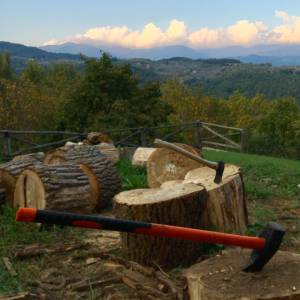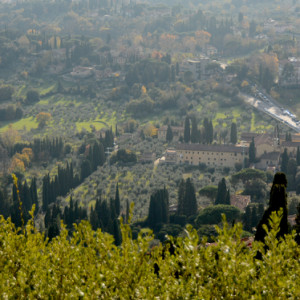The Cemetery
Bright sun and crisp air. After ruminating over Brexit on Twitter I took a break and walked up the hill to Fiesole. I wandered round the walled cemetery looking at the close-packed plaques and little side chapels to the dead.
The Italians put enamelled pictures or actual photographs on the plaques and gravestones. Some awful sad ones. Seeing the pictures makes it seem as if one might have known them - a young lad killed in a motorbike crash, a girl at 15, a striking woman at 40 with a translucent string of pearls.
A few plaques in English - to a baby who died at one year-old - Hugh Francis Fairfax-Cholmeley, an Angela James of Birmingham (both died in 1905), an Anne Dillon of Bideford in 1916.
And plastic flowers everywhere (see extra). By the end of my wander around I felt overcome with the intensity and inescapableness of death.
I continued up to the top of the hill past a sign telling me that the Estruscans had built the city walls in the 4th century BC - much is still there - that the Romans came after until the 4th century AD when the Gothic Wars were followed by the invasion of the Lombards. In the 12th century Fiesole was finally vanquished by upstart Florence and the rest is Medici. Talk about Freedom of Movement.
I sat in the warm sun looking out over the olive groves and most desirable villas in Florence (extra).
I ambled down the hill and went and had a pizza and a quartino of rosso, mixed salad, mineral water and coffee. (Something I never do.)I took the FT Magazine with me which had a feature on the Rolling Stone's gig playlists. Ronnie Wood said, 'They were useful because you'd know when to step back to avoid the fireworks else they'd blow your knees off.' (more or less)
The main photo is a caper plant growing out of one of the many terrace walls along the Vecchi Fiesolana.
May the purgatory end soon. Then we will find out if we are lifted to to heaven or condemned to hell.



Comments
Sign in or get an account to comment.


